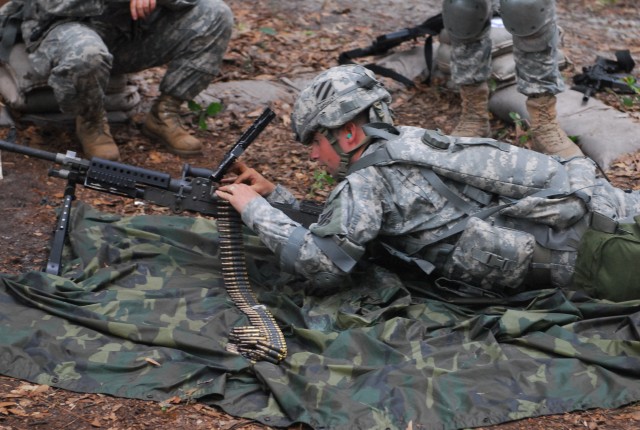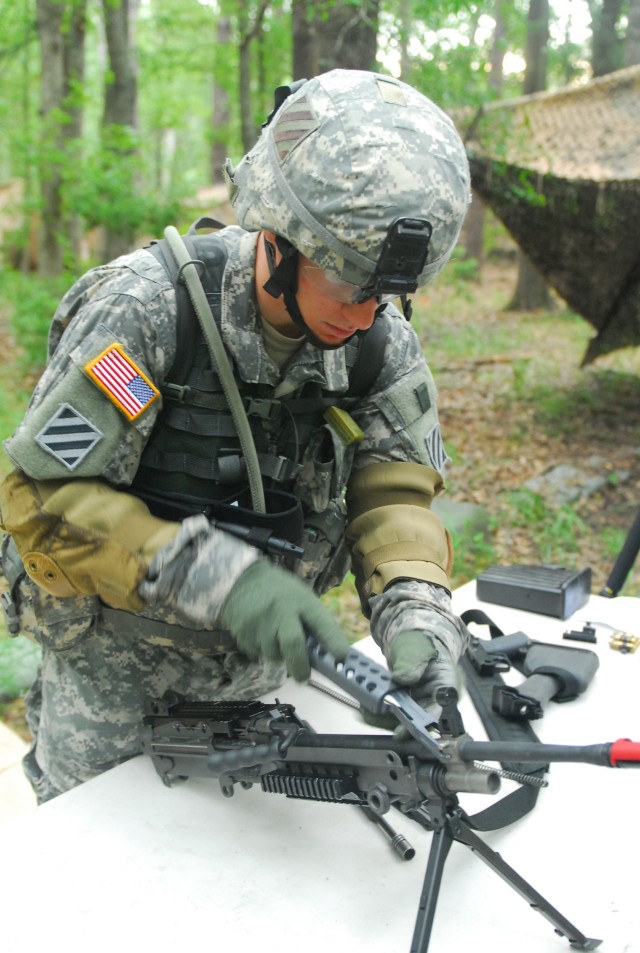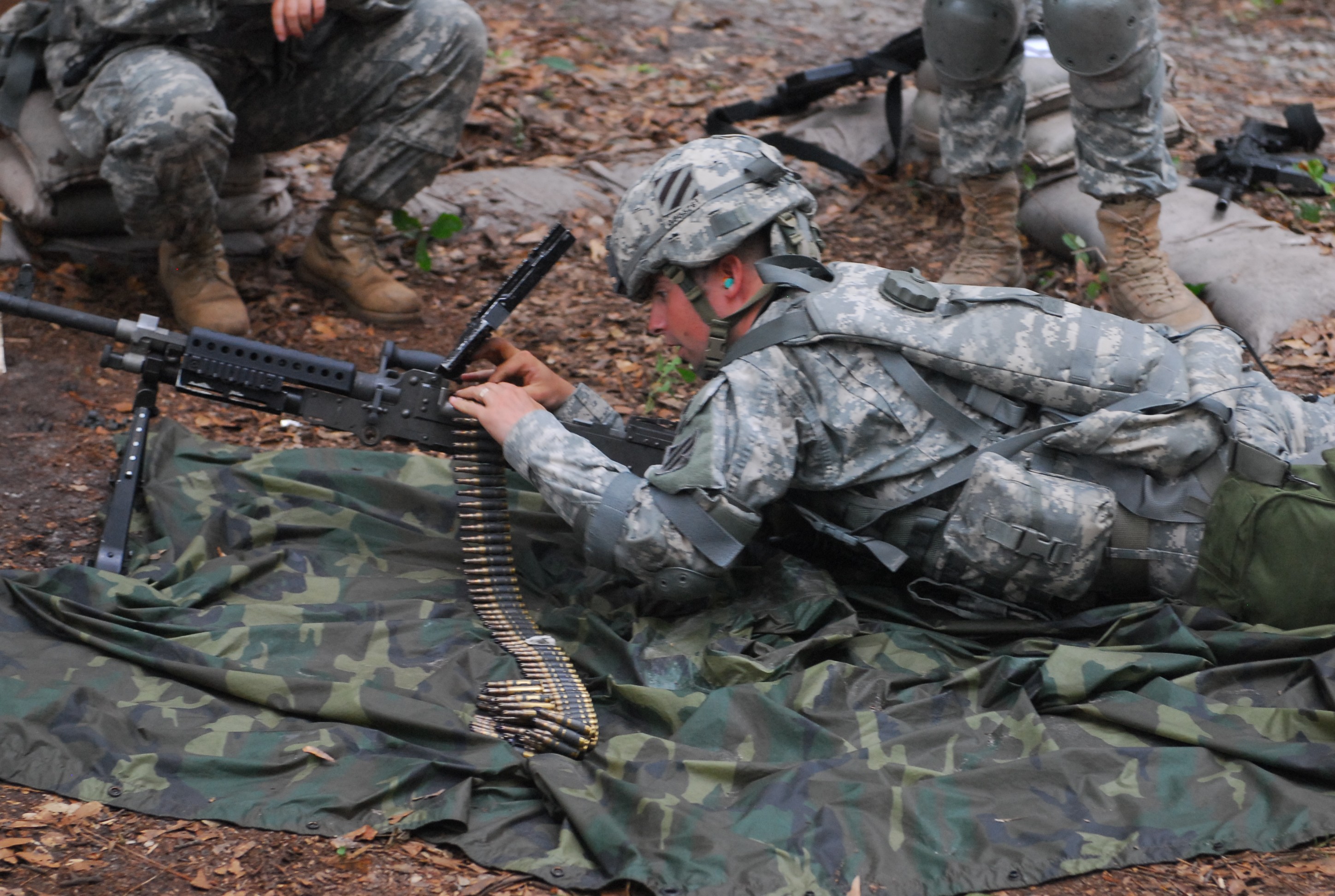<B> Fort Stewart, Ga. - Since 1918 and beginning only months after its inception, the Marne Division has had a storied history of combat. Infantrymen have engaged in several offensive ground combat operations since World War I and have helped the 3rd Infantry Division attain one of the most successful combat records of any U.S. Army division.
Throughout the years, the 3rd ID has reorganized as a mechanized unit, but with the 4th Infantry Brigade Combat Team's recent transformation from a heavy brigade combat team to an infantry brigade combat team, focused on light infantry skills, all Vanguard Soldiers, regardless of their military occupational specialty, are returning to the Marne Division's roots - trained, armed and equipped to fight on foot.
The 4-3 Brigade Special Troops Battalion was the first of six battalions within the 4th IBCT to tackle the brigade's newest training initiative, an Expert Infantryman Badge-inspired exercise dubbed Sentinel Stakes, June 15-18.
Much like the EIB course, Sentinel Stakes is designed to test Soldiers' proficiency in basic infantry skills. Troops are tested on multiple tasks ranging from disassembling and reassembling weapons systems to performing first aid. And though the service-support, 4-3 Soldiers specialize in more than 70 different jobs outside the combat arms realm and are therefore unable to receive an infantryman's badge, Sentinel Battalion Commander Lt. Col. George Lewis said participating in the EIB-type course is essential during this era of persistent conflict.
"The purpose here is to instill that light fighter sense that they are first foot Soldiers, and they have to be able to fight on the terrain wherever we find ourselves in the future and fight next to the infantryman," said Lt. Col. Lewis. "They need to know that when a weapon system goes down, it doesn't matter the MOS of the Soldier in that vehicle or on a patrol; they have got to be able to use that weapon system to protect themselves and their fellow Soldiers."
The battalion commander added that though the majority of his troops are not combat arms Soldiers, the Sentinel Stakes challenge is helping his Soldiers better themselves and learn what it takes to transform into light infantry.
"The brigade now is indicative of that spirit of Audie Murphy, light infantryman out there fighting on terrain that before this brigade could not operate on and could not sustain on," Lt. Col. Lewis said. "We looked through the reset process and through the conversion process and found that the common denominator for every Soldier in the infantry brigade task force is that they have to have those light fighter skills, light leader skills - every Soldier, male or female, regardless of MOS."
In order to successfully complete the Sentinel Stakes challenge, Soldiers must pass every timed task. Though challenging, Lt. Col. Lewis said the Soldiers of the Sentinel Battalion performed each task to the best of his or her ability.








Social Sharing